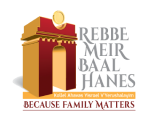High Holidays Yomim Noraim Information Segulahs and Customs

Chodesh Elul:
The month of Elul is a time of repentance in preparation for the Yomim Noraim, which are the High Holy Days of Rosh Hashanah and Yom Kippur. Elul is a time for introspection and drawing close to Hashem in preparation for the coming Day of Judgement, Rosh Hashanah, and Day of Atonement, Yom Kippur.
It is worthwhile to use this month to improve personal actions, ask forgiveness from people you might have slighted, and increase prayer and good deeds.
Segulahs and Customs:
- The Shofar- a ram’s horn is blown every morning during this month. The soul-stirring blasts inspire us to come closer to Hashem and repent.
- Selichos- Sephardim recite Selichot throughout the entire month of Elul, while Ashkenazim start a few days before Rosh Hashana. Special prayers and verses are said, including the ‘’13 Attributes of Mercy’’
The 40 Days Of Mercy:
The 40 Yemei Rachamim- Days of Mercy start from Rosh Chodesh Elul and include the Yomim Noraim, concluding with Yom Kippur. It says about these days דרשו יי בהמצאו קראהו בהיותו קרוב Seek Hashem when He is to be found, call upon Him while He is near.
During this time, there is a special closeness and opportunity to return to righteous ways.
Segulahs and Customs:
- Tehillim Chapter 27 is recited every day during this time, since it mentions a few verses that connect to this time period. This custom is brought down in the Sefer Shem Tov Katan.
- It is customary to greet and sign off written communications with the phrase ‘’Kesiva Vchasima Tova’’- May you be written and inscribed for a good year. After Rosh Hoshana, the customary greeting is ‘’Gmar Chasima Tova’’- May you merit a good final sealing.
Rosh Hashana:
Rosh Hashanah, also known as ‘Yom Hadin’ the Day of Judgement is an auspicious time for the world. It is a time that we celebrate Hashem’s creation of the world and crown Him as king. On this day, Hashem balances everyone’s good deeds over the last year against their bad deeds and decrees what the next year will be like for them.
Life or death, wealth or poverty, success or failure for the upcoming year, is all decided on Rosh Hashana- the Jewish New Year.
The Shofar is sounded 100 times during the day. There are many reasons for this, including the awakening of the soul to repent and to symbolize the kingship of Hashem.
Rosh Hashanah 2021 will be on September 7 and September 8 and will mark the beginning of the new Jewish calendar year 5782.
Segulahs and Customs:
- Simanim: There are many different traditions and customs and specific food that is eaten on Rosh Hashana, to symbolize our prayers for a sweet new year. A special prayer is said before eating which represents the merits we are asking for. Some famous examples are dipping an apple in honey while asking for a sweet year, eating the head of a fish so that we should be like the head and not the tail, and eating pomegranates which have many seeds just like the 613 mitzvos.
- Tashlich: This ritual is performed during the time period of the High Holy Days. ‘Tashlich’ comes from the Hebrew word “to cast,” since we want to cast away our sins. Special prayers are recited next to a body of water and it is customary to shake out one’s clothes.
Aseres Yemei Teshuvah:
The Ten Days of Awe from Rosh Hashana until Yom Kippur are known as Aseres Yemei Teshuvah.
During these days, one should improve their ways and ask for forgiveness from anyone they have wronged.
The services for the Days of Repentance take on a solemn tone as befits these days. Traditional solemn tunes are used in the prayers.
There are many traditions, customs and Segulahs that should be done in these days, to acquire atonement for sins and to evoke heavenly mercy.
Segulahs and Customs:
- Kapparos: Kapparot is a customary atonement ritual practiced on the days before Yom Kippur. Chicken, fish or money is waved over a person’s head while reciting a prayer to symbolically transfer their sins to the animal.
- Tehillim Chapter 130 is recited after the daily Yishtabach prayer since it discusses forgiveness for sins.
- The Avinu Malkeinu prayer is recited after the Amidah, where we ask Hashem for mercy, as our father and as our king.
Yom Kippur:
Yom Kippur is the holiest day of the Jewish calendar year. It is a part of the Yomim Noraim, which means Days of Awe. We express our awe on this day, through having a day of fasting, praying and repenting for past deeds. On this Day of Atonement, all sins get forgiven and every Jew’s soul gets cleansed with a brand-new chance.
Yom Kippur 2021- 5782 will begin in the evening of September 15 and will conclude at nightfall of September 16.
Segulahs and Customs:
- The tradition is to wear white clothing to show that we are like angels, and to symbolize this day of atonement where we will become pure. It also reminds us of our mortality.
- It is customary to light a full day memorial candle. If one’s parents are not alive, an additional candle is lit.
- Before the onset of Yom Kippur, fathers bless their children. Different versions are used to bless sons and daughters.
Hoshana Rabbah:
Hoshana Rabbah is the seventh day of the Jewish holiday of Sukkos. On this day the final decree for the upcoming year is sealed. Hoshana Raba is a day of prayer and repentance and is marked by a special synagogue service. Congregants make seven circuits with their lulav and esrog while reciting Hoshanas.
Segulahs and Customs:
- It is customary to stay up all night learning Torah and reciting Sever Devarim. The source for this is R’ Chaim Vital in Pri Eitz Chayim.
- A bundle of willow branches- Aravos, also referred to as Hoshanas, are beaten on the floor. The source for this custom is Gemara, Sukkah 44b
Teshuvah Tefillah Tzedakah Ma’avirin Et Roa Hagezerah
Repentance, prayer and charity can avert the evil decree:
Teshuvah- Repentance: This time should be used to repent on sins from the past year. When done sincerely, Teshuvah has the power to erase bad deeds as if it never happened. You can now have the opportunity to start the new year with a fresh, clean slate. To fully complete the process of Teshuvah, use the time to do good deeds to show that you want to be better.
Tefillah- Prayer: Use the power of prayer to Daven for a good year throughout the Yomim Noraim. You can click here to submit names for Tefillah at the Kever of Rebbe Meir Baal Hanes.
Tzedakah- Charity: The most powerful tool to use at this time to acquire merits, is by giving charity and showing your care to others. By displaying mercy to other people, Hashem will give you a merciful year. Click here to give to Rebbe Meir Baal Hanes Charities.


